They're as easy on the eyes as they are easy to grow. Meet 13 garden superstars that don't take a super amount of work.
13 Easy Plants to Bolster Backyard Landscaping

Smoke Tree
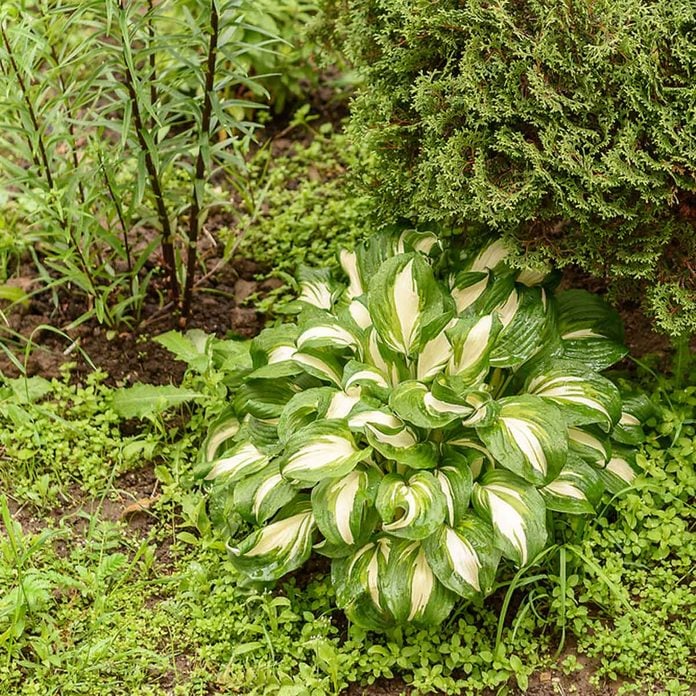
Hostas
The sultan of shade plants is also a snap to grow. As long as they aren’t trampled underfoot or cooked in the hot sun, hostas are practically bulletproof. And with a range of colors — green, chartreuse, blue-gray, variegated — there’s a hosta to satisfy every gardener’s appetite. Add to that the fact that they come in various sizes, from diminutive six-inch-wide plants to boisterous 24-in.-wide plants, and you’ve got a winner. Keep them watered when the weather is dry and watch for slugs (trap them in tuna fish cans filled with beer). Other than that, sit back and enjoy everyone’s favorite shade plant!
Plant waves of hostas in a shady perennial bed, or cluster an odd number to lighten a dark corner. These are best in USDA Plant Hardiness Zones 3-9.
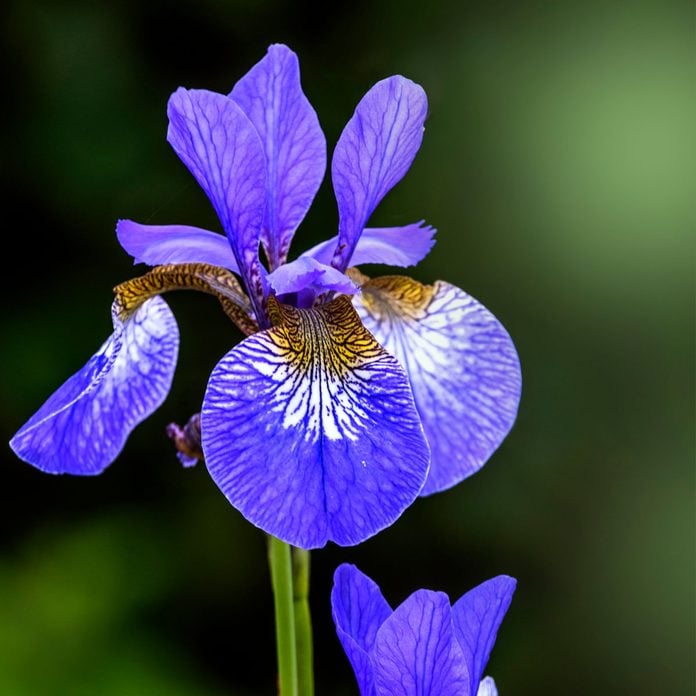
Siberian Iris
One of the easiest of all irises to grow, Siberian iris is a gardener’s favorite for a number of reasons. It’s a no-fuss plant that can be ignored. But you won’t ignore it, because it’s quite beautiful — with spiky, sword-like foliage throughout the growing season and handsome, frilly, almost delicate-looking blooms in late spring and early summer. Flower colors range from white and lavender to a stunning clear blue. As for maintenance, some people trim the foliage in late fall (optional) and divide crowded plants every four or five years (a bonus because it means free plants!).
Use Siberian iris to line a fence or as part of a mixed flower bed. Best in Zones 3–8.

Virginia Spiderwort
Also known as spider lily, Tradescantia virginiana is a tough plant for dry shade. But it also takes sunlight and moisture. The point is, this perennial is nothing if not adaptable! Its slender, spear-like leaves grow up to three feet long and look good throughout the season, but the blue, purple or occasionally white flowers really add to the look in summer.
Use it in a naturalistic setting, such as growing against a rock or tree stump. Zones 4–9.
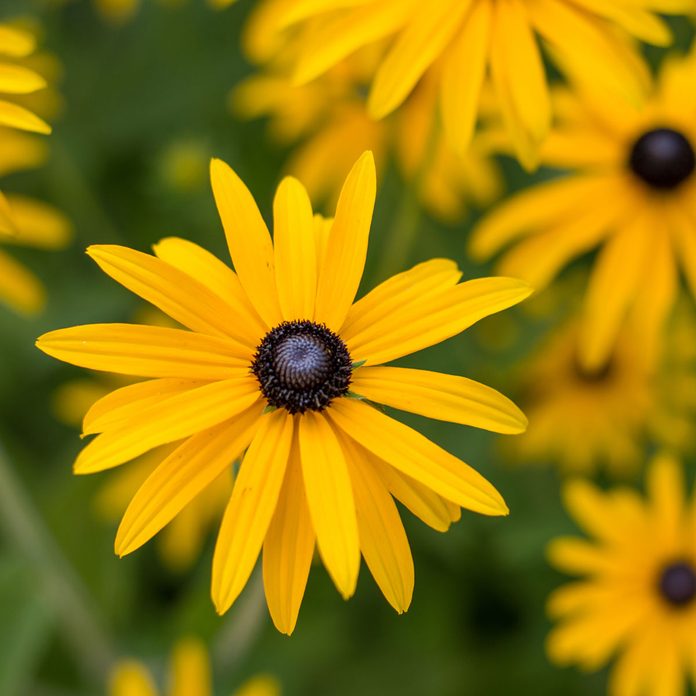
Rudbeckia
Better known as black-eyed Susan, Rudbeckia fulgida raises sunshiny smiles wherever it grows. Maybe it’s the long-lasting, golden daisy-like flowers with the dark-brown centers or the many butterflies and honeybees that flock to these flowers, but rudbeckia is hard to miss later in summer. Let them go to seed in fall and feed the birds over the winter. This drought-tolerant, clay-dwelling perennial is not demanding at all. And it’s deer resistant, too.
Use a large patch of black-eyes Susans to anchor a flower bed. Best in Zones 3–9.
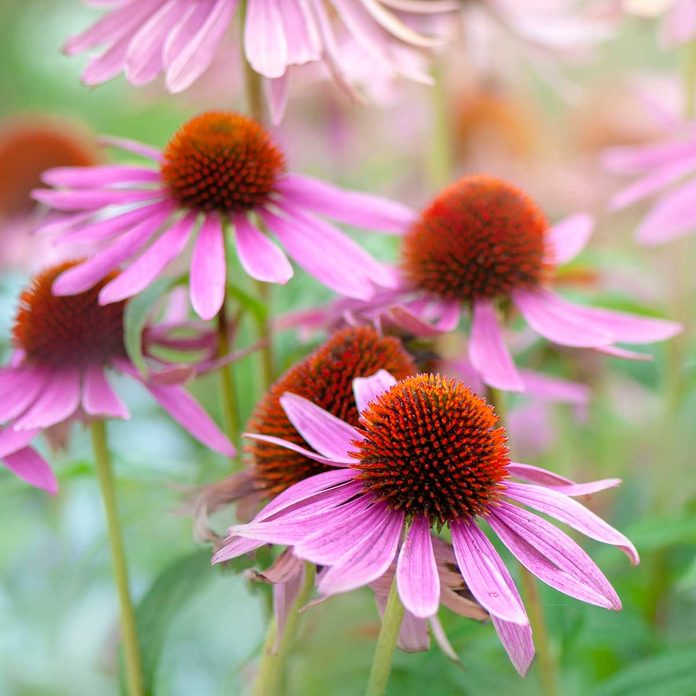
Echinacea
It’s also known as purple coneflower, but that common name seems inadequate now that breeders have introduced a range of other colors, from tomato-soup reds to bright oranges and vivid yellows. True to its prairie heritage, echinacea is tough as nails no matter what the weather throws at it. Gardeners like that it takes heavy clay soils and sneers at drought and neglect. Like rudbeckia, it attracts pollinators in summer and birds in fall and winter.
Echinacea looks good when massed in a mixed flower bed. Best in Zones 5–8, although some cultivars are hardy to Zone 3.
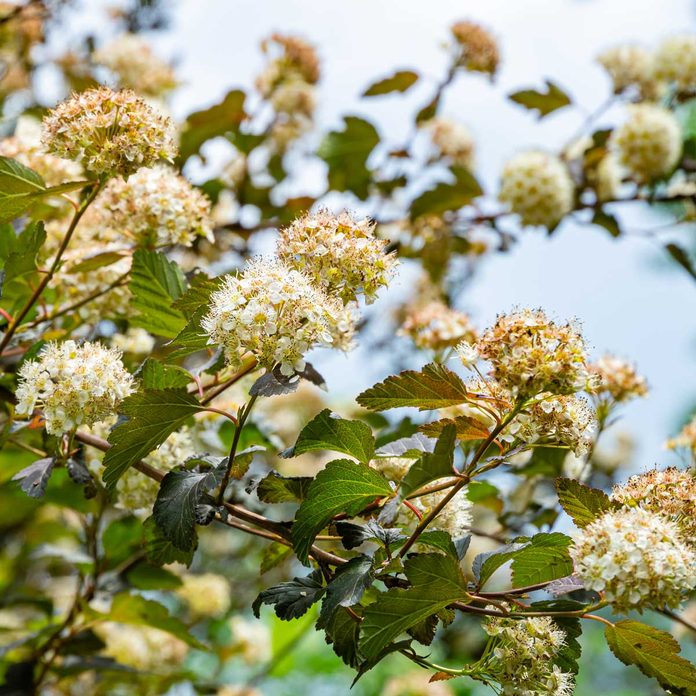
Ninebark
Ninebark (Physocarpus opulifolius) has always been a garden stalwart. It never really got noticed until breeders started coming up with attractive cultivars featuring burgundy or copper foliage, pretty button-like flowers in spring, peeling bark and an elegant habit that rarely needs pruning. It’s drought tolerant once established and not particular about soil, accepting acidic and alkaline conditions.
It looks great in a shrub bed or pruned into a tree shape as a focal point. Zones 2–7.
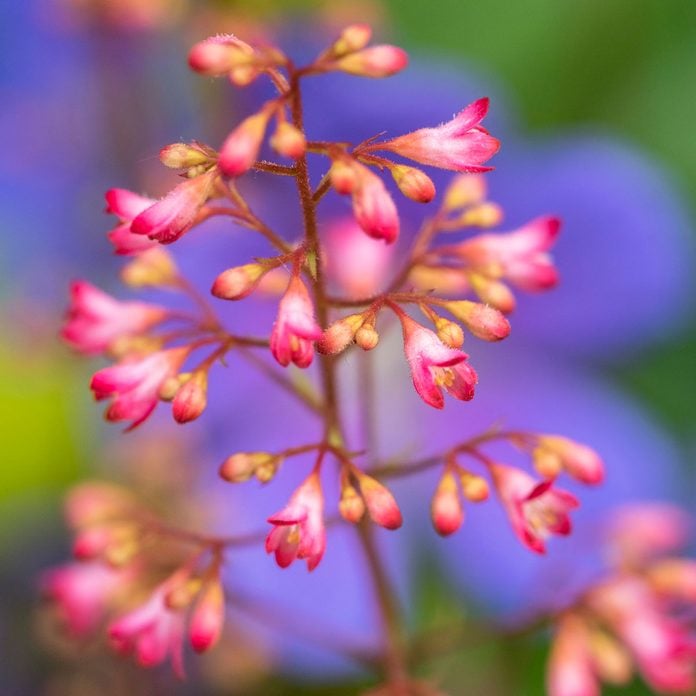
Heuchera
The common name, coral-bells, refers to the nodding bell-shaped flowers — a definite bonus when they appear in summer. But the name heuchera might be more fitting than the dainty-sounding coral-bells, simply because it sounds more muscular, sort of like Hercules. No doubt heuchera has a rough-and-ready streak running through its handsome foliage, which comes in colors ranging from burgundy, purple and red to cinnamon, gold and lime.
Use it as a colorful edging plant in Zones 4–9.

Vinca Vine
Vinca vine is also called periwinkle or myrtle, but this plant of many names has just one purpose: to cover ground. It conquers heavy clay soils and spreads at a moderate pace so it’s easily kept in check and won’t become a nuisance. The periwinkle flowers are a treat in spring, and the glossy dark-green foliage looks great the rest of the season.
It looks particularly good rambling over rocks and fallen tree limbs. Zones 4–10.
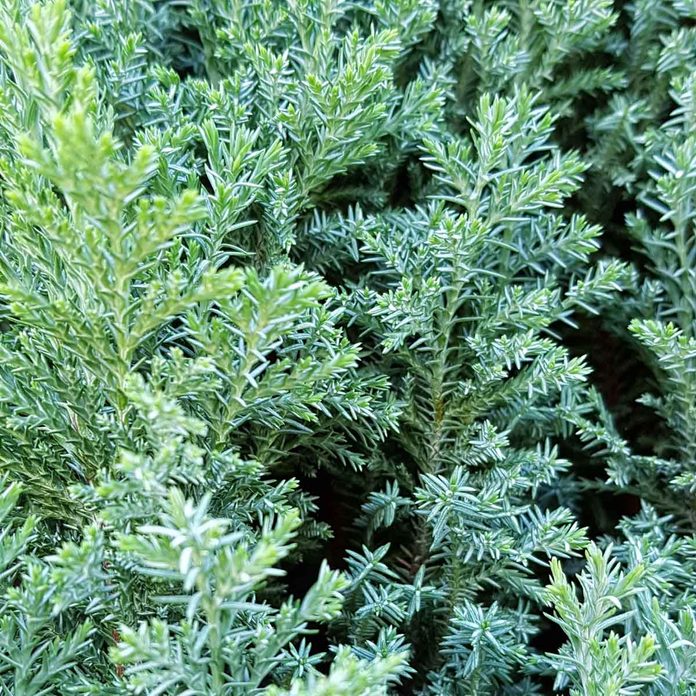
Juniper
This is the tough guy of the evergreen crew, thumbing its nose at dry, rocky soils and scorching sun. Deer and other browsing animals leave it alone, too. There are more and more juniper varieties each year, many with attractive textures and colors. It’s available in various forms, from spreading groundcover to mounded to upright, so juniper can serve a number of landscape purposes.
Use upright junipers as a substitute for arborvitae where deer are prevalent. Lower forms look good as foundation plants. Zones 2–8.

Dwarf Alberta Spruce
Patience is key with dwarf Alberta spruce, which only puts on a couple of inches of growth per year. But what may seem like a drawback is actually a drawing card with most gardeners. No worries about an evergreen tree overtaking the house, plenty of room for one in even the smallest garden, and you can even grow one in a pot.
Use dwarf Alberta spruce to decorate an entryway, deck or patio or incorporate it into the front of a mixed shrub border. If you want some more inspiration to help you liven up your home entrance, then these entryway plants are perfect. Zones 2–8.

Ornamental Grass
There are many ornamental grasses and most of them are seriously easy to grow, requiring only that they get trimmed back to the ground in early spring to allow for new growth. Most are drought tolerant and will grow on poor soils. It’s important, though, to pick a species that won’t outgrow its space.
Fortunately, choices range from eight inch tall blue fescue to 14-ft. giant miscanthus, meaning your ornamental grass can serve any purpose from edging a border to hiding an eyesore. Hardiness depends on species.

Hydrangea
There’s not much you can do to hurt a hydrangea. While bigleaf hydrangea (H. macrophylla), Zones 6–8, is a little picky about watering and buds getting nipped by a late frost, oakleaf (H. quercifolia), Zones 5–9, and panicle (H. paniculata), Zones 3–8, are hardier hydrangeas that need little care once they’re established. The main thing is that they get enough sunlight to flower. Colorful flowers are long lasting and continue to look good as they fade.
Use hydrangea as a focal point, foundation plant or in a mixed border.



















